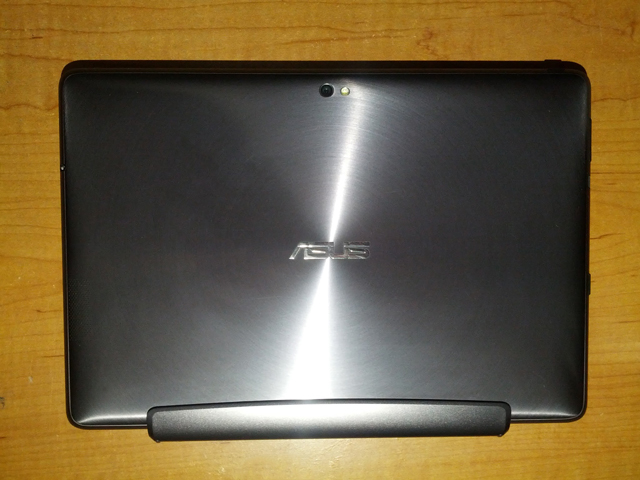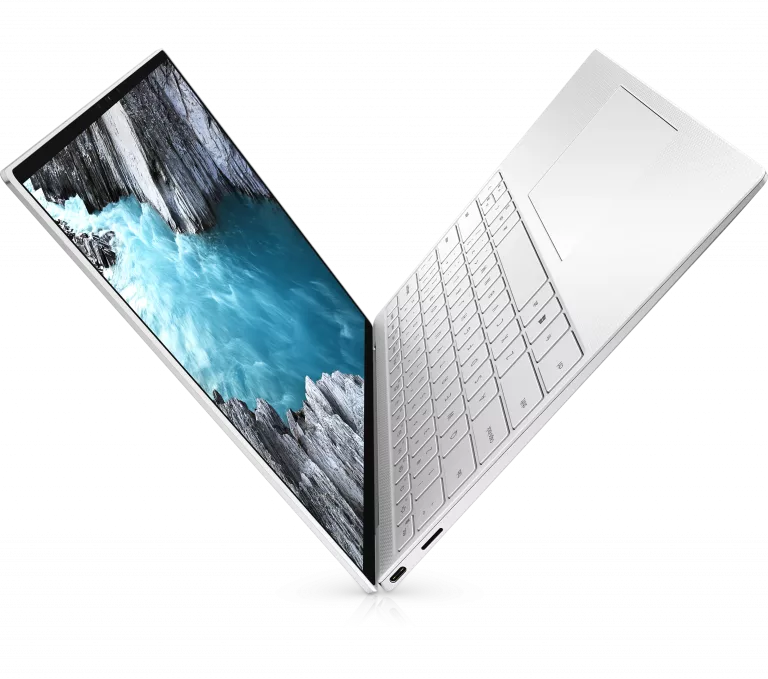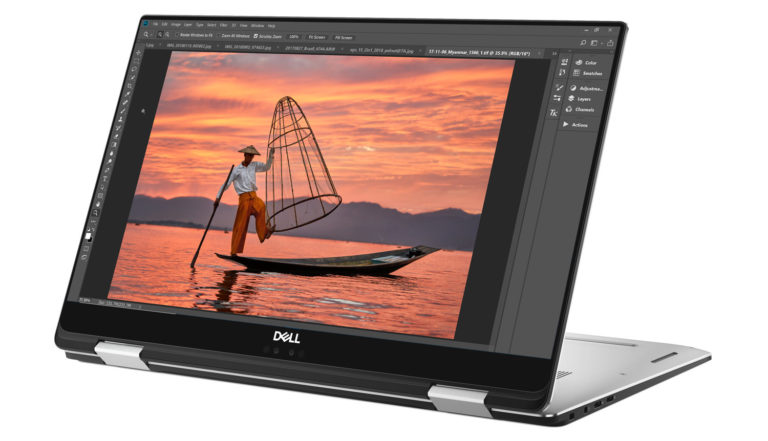In December of 2011 Asus released the successor to its popular Transformer Android tablet, dubbed the Transformer Prime. Sporting the first quad core processor for any tablet, Asus’s incredibly popular keyboard dock and Google Android’s latest operating system called Ice Cream Sandwich, there was a lot I was looking forward to with this device.
As a full time photographer that frequently travels the globe, I have been looking for a tablet or laptop to meet my needs. While I own a 2011 11″ Apple Mac Book Air, I typically do not do any serious editing on the road. While I do thoroughly enjoy the MBA, it has a pretty horrible battery life (less then 5 hours), which doesn’t cut it for me. After using an iPad & iPad 2 plus various other Android tablets, I was still left wanting more functionality and practicality. While the Transformer Prime is certainly not perfect, it has been the closest I have found to a true travel laptop replacement.
I received the 32gb Transformer Prime in the grey amethyst color as well as the matching keyboard dock.
Specs:
| Display | 10.1″ LED Backlit screen with Super IPS+ (1280 x 800) 10 finger multi-touch, Corning® Gorilla® Glass |
| Operating System | Android™ 4.0 Ice Cream Sandwich |
| Processor | NVIDIA® Tegra® 3 Quad-core CPU |
| Memory | 1 GB |
| Storage | 32GB / 64GB (2) EMMC + 8GB life time ASUS WebStorage + Expandable Micro SD card slot |
| Wireless | 802.11 b / g / n, Bluetooth 2.1 + EDR |
| Camera | 1.2MP (front), 8MP Auto focus (rear) with flash / F2.4 large aperture |
| Interface | PAD: 2-in-1 Audio Jack (Headphone / Mic-in); 1× micro HDMI port 1 × Micro SD Card Reader; Internal Microphone & Stereo Speaker Mobile Dock: 1 × USB2.0 port ; 1 × SD Card Reader |
| Sensors | G-Sensor, Light Sensor, Gyroscope, E-compass |
| Flash Support | Yes |
| Multi-tasking | Yes |
| Asus Branded Apps | ASUS launcher, @Vibe Music, ASUS WebStorage, MyLibrary, MyNet, MyCloud, File manager, ASUS sync, SuperNote, App Locker, App Backup, TegraZone, Polaris Office |
| Battery Life | 12 hours; 25Wh Li-polymer Battery (4) 18 hours pad with keyboard dock ; 25Wh(pad) + 22Wh(docking) Li-polymer Battery (4) |
| Size / Weight | 263 × 180.8 × 8.3mm ; 586g (pad only) / 263 × 180.8 × 8~10.4mm ; 537g. (dock only) |
Design:
One of the first things I noticed about the Transformer prime is how sleek it looks. While Apple is known for its elegance, Asus should certainly receive credit when it due. They went with an aluminum body that that is certainly eye-catching and feels solid. The edges of the Prime are tapered, giving them more of a sharp edge. While this adds to the “sleekness” of its design, it does take some time getting used to holding the tablet itself in a few common positions. It weighs in at 586g (not including the keyboard dock) making it lighter then the iPad 2 but a few grams heavier then the Samsung Galaxy Tab 10.1.

On the left side of the tablet you have the volume up and down buttons, micro HDMI port as well as the micro SD slot to expand you available memory. On the top edge you have the power button in the left corner and on the right edge you have the headphone jack. The bottom of the tablet has Asus proprietary connector for charging as well as a small slot on each side of the plug in to work with the optional keyboard dock.
I really only have two complains with the design of this tablet. The aluminum body is as equally as beautiful as it is scratch prone. Because of the shinny surface, small scratches that are common with using nearly any tablet are a little more visible. Also, when attached to the keyboard dock, which is a must in my opinion, it is not the easiest to open. I think this has to do with the “sharp” edges from the tapered design. Certainly not deal breakers for me, but worth noting never the less.
It has been said that it is the aluminum body that is responsible for the poor GPS coverage. Personally I have almost no use for GPS on a 10″ tablet, as that is what I have a smart phone for. While the wifi coverage seems to be on par with all of my other tablets, they are not nearly as good as a laptop, such as my Apple 11″ MBA (Macbook Air). Laptops in general seem to hold a stronger signal over further distances then tablets.
Ice Cream Sandwich:
There is no doubt that while Honeycomb, Android’s first tablet operating system, was a good first attempt, it was riddled with bugs. My wife and I each bought a Motorola Xoom on the day they became available and while we made them work for us, it was certainly a struggle at times. Most of the issues came from a UI that wasn’t as fluid as it could have been, sporadic lag throughout the use of the device and applications crashing on occasion.
The good news? All those problems seem to have been resolved and ICS (Ice Cream Sandwich) is hands down the best Android operating system to date.


One of my favorite features of Android devices, especially over their IOS counter-parts, is the use of widgets. On an iPhone or iPad, I had to go into an application any time I wanted to check my email, find out about the weather or see what the latest news is. With Android, I do not have that limitation. I can easily see my latest emails, look at my calendar or flip through news stories the second I turn the tablet on. While this might not sound like a big deal, in reality it saves me time every time I use the device. Seconds add up over the year and being an individual that has a constant 10 page to do list, this is a welcome feature that I would have a hard time living without.
If you have used an Android tablet running Honeycomb, you should feel right at home with the layout. Do note however that there are some very discernible differences between Honeycomb and ICS.
- Improved holographic effects, widgets and app launcher
- Fast and smooth performance throughout
- New and improved UI (User Interface) such as swiping away notifications
- Improved Multi-tasking
- Top of the line voice to text capabilities
- New System Apps (Gmail, Google Voice, Google Calendar, Contacts and others)
- Built for both phones and tablets (offering a smoother transition for upgrades for all Android devices moving forward)
Quad Core Processor:
While companies like Apple like to tell you that it is not about the hardware specs for a device, there is a reason that every upgraded iPhone or iPad typically contains the latest and greatest in terms of processing power. The reality is that specs do matter. Maybe not as much as a solid operating system and user interface, but they certainly play a role. Most popular tablets, including the iPad 2, all use dual core processors.
The Asus Transformer Prime is equipped with the most powerful tablet processor currently available, the Nvidia Tegra 3 quad core processor. This processor brings with it more power, less battery consumption and a much more efficient workload distribution, because of the extra cores. One of the more exciting things about the Tegra 3 processor is that it actually has a 5th processing core called a “companion core”. The purpose of this extra core is to work at low frequency and low power, allowing it to handle running the tablet durning standby mode, playing music or even video playback (basically anything that is not CPU intensive). All of this helps to provide you with phenomenal battery life for any device running these processors.

Here is a video from Nvidia that shows the processing differences between the current dual core processors and the Tegra 3.
One of the most exciting features of the Tegra 3 processor on the Asus Transformer Prime tablet is the ability to throttle the CPU processor as you see fit. You are given 3 different modes to use your Prime: Power Saving Mode, Balanced mode and Performance mode. This way you can control how much power you want the tablet to consume. On average, I leave my Prime on the Normal mode, however shifting it to “Power Saving Mode” has allowed my tablet to last quite a long time when I have been scrambling for an outlet after letting it run nearly out of power. Performance mode is great when you want to drive the most amount of power to your screen and the CPU for games, movies and any other CPU intensive situations.

Screen Quality:
When it comes to the quality of the screen, there is no doubt that this is a high priority for most photographers. When it comes to the practical use of tablets, they are most commonly used as digital portfolio’s to display your work to potential customers and clients. This was one feature that I certainly felt the Xoom missed out on. The colors were just not saturated or crisp enough for me to truly be happy with displaying my work.
The screen on the Transformer Prime is a Super IPS display with Gorilla Glass, a 178-degree viewing angle and a brightness of 600 nits. What does all of this mean? It means that the screen is brighter and more saturated then most tablets out on the market. Brightness is important because of the reflective nature of the LCD. In sunlight, most tablets and laptops are near impossible to view in direct sunlight.

The Transformer Prime comes with a new feature called “IPS +” which allows you to instantly increase the brightness all the way up to 600 nits. To give you an idea, the iPad 2 is only capable of 406 nits of brightness. You will want to select this feature when attempting to use the Prime outdoors or when you really want to showcase some of your photography work in the best light…no pun intended 🙂

As you can see from the above image, the colors are displayed with accurate saturation and sharpness, leaving me feeling great about displaying my work to potential customers, clients and colleagues. Do note that when you have “IPS+” engaged as well as the CPU processor throttled to “Performance Mode”, this will drastically lower overall battery life. Typically I would only turn on these super charge features when need, such as displaying high quality images or watching 1080p movies.
*note that when you are in “Power Saving Mode” with CPU throttling, your images will lose saturation and a touch of sharpness because less power is being pushed to the screen.
Keyboard Dock:
The keyboard dock is single handedly the most exciting aspect of the Asus Transformer Prime tablet. Typing on any tablet with only the digital keyboard is a pain in the butt. If you have a long email to write, you better have a lot of patience. While there are multiple bluetooth options for the iPad and other Android tablets, they all pail in comparison. Why? First bluetooth requires your device to send and receive information which eats up battery life. Secondly, this is the 2nd (1st being the original Asus Transformer tablet) keyboard to be designed specifically for tablet use and more importantly for use with Android. The keyboard includes short cuts to open your browser, change your volume and screen brightness, access menus, search, turn on or off wifi and bluetooth and much much more. It also contains a fully functional trackpad that not only allows for accurate clicking, but supports multi touch support so that two fingers can help you much from screen to screen. The keyboard adds a full single USB port as well as a SD card slot to upload your photos from. Between the USB, SD and mirco SD slots on the keyboard and dock, you have a wide variety of ways to dramatically increase your storage space from incredibly cheaply. This is a feature lacking from the iPad that I always felt was needed.

While all of that is certainly welcome features, the most impressive is that it has its own battery, allowing you to increase the battery life of your tablet by nearly 2/3rds. So 10-12 hours of use turns into 17hrs – 18hrs. As a travel photographer, this is huge! Most laptops like my Macbook Air only last for 4 – 5 hours. Most other tablets, just 10 hours. 18 hours in no laughing matter!
As I mentioned above, this is easily my favorite feature of this tablet. The keyboard is responsive and a breeze to type on. All of the shortcuts help me save time when trying to adjust certainly settings and in my opinion, this optional accessory is a MUST HAVE. Having said all that, I have found the trackpad to be a little too sensitive. Often times my palm would accidentally touch it while typing, causing the cursor to move to some random location. There is a simple fix which is a shortcut button on the keyboard to turn off the trackpad completely, which I have off about 90% of the time. The tablet when docked with the keyboard and closed is also a little bit of a pain to open. Again, not deal breakers, but worth noting.
Battery Life
As I mentioned above, the battery life on this tablet is amazing. With regular use, I can get about 16 to 17 hours out of the transformer prime tablet with the keyboard dock attached. This is ACTUAL use, not just the time being disconnected from a power source. On a given week, I need to charge the keyboard and tablet twice…and that is with pretty solid use each day. The tablet alone can get 10-12 hours of run time, but with the keyboard dock, its longevity is extended greatly.
As I mentioned above, two of the largest factors of battery life are the CPU throttling (Power Saving, Normal or Performance modes) as well as the screen brightness. If you have performance mode turn on while have IPS+ enabled with full brightness 100% of the time, your battery life will be much different then mine.
Uses for a Photographer:
As photographers, we all tend to be a little gear crazy. When ever a new lens or camera or device comes out, many of us clamor to have the latest and greatest, most of the time for no other sake other then to say we have it. While I am certainly a gadget guy, I also have tried to become much more practical as my career has progressed. No longer to I feel the need to have all the latest devices, but rather focus on practicality and functionality. Having owned an iPad, iPad 2 and a variety of Android tablets, I can honestly say that for 90% of people out there, they are want devices…..not needed devices.
In the past tablets have been good for showing images, but that is about it. While it is nice to be able to watch a movie on the long flights I find myself on regularly around the globe or write an email with a wifi connection that I stumble upon in a random 3rd world country, there was not that much practical use as a photographer that I couldn’t do better with other devices. With the Asus Transformer Prime running Android’s ICS, I am beginning to rethink that mind set.
Here is a small list of practical uses that I am capable of doing with the Prime.
Portfolio Display:
As previously mentioned, displaying ones photographs to potential customers and clients digitally is important. No longer do we have to carry around large and heavy binders full of prints.

Camera Tethering:
Hands down the most exciting aspect of my Asus Transformer Prime is pairing it with my professional Canon camera bodies. Using a program called DSLR Controller Beta I have the ability to not only tether my tablet to my camera, but also have full control over it as well.

While at first this might sound like a gimmick, the reality is far from it. Being able to control my camera from my tablet, I not only have the ability to view my frame on a much larger screen, but also have access to features not currently possible on my camera, such as setting up a time lapse shot. The use of this application is not limited to my Transformer Prime either as I can use it on my Galaxy Nexus phone or most other Android devices.
*currently this ONLY works with Canon cameras. For more information, check out the DSLR Controller website
Photo Backup:
One of the best features for photographers of many Android devices is USB host support. This is the ability to plug in a thumb drive or hard drive into the device and have the ability to utilize that extra storage as you see fit. The screenshot below is of a 250gb hard drive attached to the Asus Transformer Prime tablet through the USB slot on the keyboard dock. I have full access to this HD and can easily transfer files to or from the HD with ease. Essentially this allows me to use my tablet as the median to backing up my photos on the road.

Simple Photo Editing:
While I own a Macbook Air that is fully capable of using Adobe Lightroom and Photoshop, I rarely found myself wanting to do any sort of series editing on the road. I have two 24″ ISP displays that are high sharp and accurate that I use to make sure my images are always looking their best before I publish them or have them printed. However when I am traveling, I do occasionally want to do some basic editing of a few images to upload to the various social networks that I have a large presence in.

While there are a handful of tools that I can use to edit an image such as Adobe’s Photoshop Touch and soon Nik Softwares Snapspeed, both are limited to only editing JPG files. Like most professional photographers, my images are captured in RAW files, allowing me to have the greatest amount of room to edit my images once I get back to my office. The good news is that there are a couple of applications available on the Android market that will allow to you both view and convert Raw images to JPGs on your tablet. Some of my favorites are RawDroid, Rawpal Gallery and Android Photo Backup (all of which work on the Transformer Prime).
Processing Orders:
When I have a gallery event and wish to sell extra prints or run a private photography workshop where my clients are responsible for extra costs such as transportation or national park entrance fees, I can easily accept CC payment using the Asus Transformer Prime and a phenomenal program called Square.

Square allows you to easily accept CC payments on any Android or IOS device. When you sign up with their service they will send you a small credit card reader that plugs into your headphone jack. Once you installed the application and logged in, the process is a snap.
In-Depth Correspondence:
As I mentioned previously, one of my biggest complaints of a standard tablet (from any manufacturer) is typing on the digital keyboard. While it works great for quick responses via email or text, they are a huge pain to work with if you have a long email or blog post to write. With the use of the Asus keyboard dock, this is no longer a problem. Not only does it add 6-8 hours of battery life, but it makes writing a breeze. Between the various websites and business I run as well as my presence on multiple social networks, I am constantly staying in contact with various individuals and uploading new content to keep people engaged. They keyboard is king for someone like me.
Pros & Cons:
Pros:
- Powerful
- Portable (Small footprint and light)
- Amazing Battery Life
- Has practical use for my photography business
- Expandable Memory and USB Host Support
- ICS is the best Android OS yet
- Chrome Beta Browser is first full desktop browser for mobile device
- Multiple practical uses for the tablet as a Photographer
- Screen is a fingerprint magnet (I recommend a screen protector)
- Once connected to keyboard dock, it is not the easiest to open
- Keyboard mouse trackpad is “touchy” (I disable mine 95% of the time)
- GPS is present, but mostly spotty with its ability to make a connection
Conclusion:
For the first time a tablet actually has me leaving my laptop at home when I am hitting the road. Because I do not do any serious photo editing while traveling, the Asus Transformer Prime works perfectly for basic photo edits and keeping up with email, my website and various social networks. The ability to tether to my Canon pro camera bodies and accept CC payments with the Transformer Prime while out in the field is icing on the cake. The fact that it has an optional keyboard dock and that the battery life is nearly 4x that of my 11″ Macbook Air, makes it easier to transition to the Transformer Prime. While it would of been nice to have a fully functional GPS system, a screen that wasn’t a finger print magnet or a keyboard dock that was a little easier to open…none of these are deal breakers for me.
The iPad will probably continue to be the tablet of choice for many photographers, but I hope people start to realize that there are plenty of other options out there on the market these days that might offer much more practicality and functionality to a device that is mostly used for entertainment purposes. The Transformer Prime with 32gb of ram + the keyboard dock is $650 USD….my 11″ Macbook Air fully loaded is $1800 USD. You do the math. I highly recommend the Asus Transformer Prime for any photographer in the market for a tablet.











